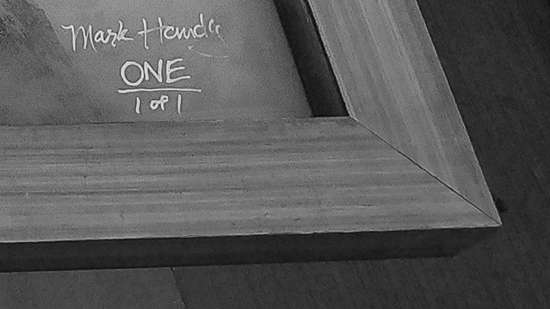Prior to 2016, I sold my images in a variety of edition sizes, ranging from no more than fifty to as few as three.
I felt that an edition size of fifty was on the small side. But I knew that an edition size of three was extremely small — and rare. Indeed, very few photographers limited their images to just three prints. That’s understandable, of course. Photographers want to maximize their profits and selling fifty images — as in my case — was an excellent way to leverage a single capture in the marketplace.
Still, I always grappled with what a reasonable “limited edition” size should be. Did 2,000 copies of a single image stretch the bounds of what could reasonably be considered limited? I thought it did. How about 1,000? That, too, seemed very large for a limited edition. I eventually settled on fifty as my largest edition size; I didn’t think it was too large and it still allowed me to recoup my image-acquisition costs and make a few dollars along the way. As such, from 2013 to 2015 I confined my edition sizes to no more than fifty.
By the end of 2015, however, I began reevaluating my business model insofar as edition size was concerned. As I surveyed the ever-changing fine-art photography market, I came to the conclusion that edition sizes had crept downward during that 2013-2015 period — even if the change was small. To wit: in 2013 an edition size of fifty was legitimately small on a relative basis. By the end of 2015, though, some photographers (though not a majority) were offering edition sizes that were comparable to mine.
With that backdrop in mind, I tried to figure out what changes or tweaks, if any, I wanted to make in 2016. I knew that I would continue to print on the same medium, using the same format I had always employed, so this change would only concern the number of prints I issued in each edition. The reality is that there are a lot of amazing photographers in this industry. But, thankfully, it’s not a zero-sum game where winner takes all. There is plenty of room for everyone to do well, even if a healthy number of people believe otherwise. Do fantastic work, take care of your clients and their needs, market your work and yourself properly, and there is a good chance that you’ll succeed.

Anyhow, at the beginning of 2016, I made the decision to sell just a single print of any image I captured. From that moment forward, every image that I captured would be sold just once. I knew that I was leaving money on the table but I also knew that, if I priced my single image properly, I would do just fine. After all, I have a large portfolio and I stay busy in the field, capturing a lot of saleable work throughout the year. Moreover, I also knew that collectors of my work would appreciate the exclusivity of owning the only copy of an image I captured.
After giving it some serious thought, I made the decision to adopt a single-image edition size. My images couldn’t be more rare. My edition sizes couldn’t be any smaller. And my clients, who I appreciate more than anything, love the idea of being the only owner of a particular image.
Meanwhile, in addition to reducing my edition size to one, I also decided to cut the dealer out of the equation. Rather than selling my work through galleries and dealers, which is the only model I had known, I decided to sell directly to collectors. As such, I was able to eliminate costs from the price of my images. While it was not unusual to price images at $10,000 in the gallery, I could substantially reduce the cost to collectors if I was selling direct to them. After giving it some thought, cutting the gallery and dealer out was an excellent choice.

